-
The study of superheavy elements and their synthesis has become an important field of research recently. To date, elements up to Z = 118 and their corresponding isotopes have been synthesized. However, research into the superheavy nuclei beyond fermium has received much attention in the last few decades because these nuclei are classified as transfermium elements, whose stability is mostly governed by shell effects. The quest to find the heaviest element in the nuclear landscape has yielded many surprises and expanded our understanding of nuclear reactions. These reactions play a pivotal role in the extension of the Periodic Table via the synthesis of new elements and isotopes. Numerous theoretical and experimental endeavors have been conducted to explore various reaction conditions and the mechanisms that govern their subsequent decay [1−10].
The study of the disintegration of a compound nucleus formed through various low-energy heavy-ion reactions is a fascinating topic because it facilitates the production of new, non-natural isotopes. Furthermore, these mechanisms provide us with a thorough understanding of many aspects of nuclear reactions and their associated structural effects. Decay dynamics is widely used to explore the compound (CN) and non-compound nucleus (nCN) decay mechanisms. The equilibrated state of the composite system in a heavy-ion reaction (HIR) is influenced by several factors, including the mass asymmetry of the entrance channel
(α) , Businaro–Gallone mass asymmetry(αBG) [11, 12], incident energy required to overcome the Coulomb barrier, product of charges of the projectile and target(ZPZT) , deformations and orientations, and shell effects.Because the colliding massive nuclei experience an enhancement in the Coulomb repulsion, it may result in decay of the composite system. When a composite system reaches full equilibrium, the projectile and target merge, resulting in the formation of a CN stage. Next, two decay routes are possible: evaporation residue (ER) or fusion–fission (ff) fragments. In contrast, a non-equilibrated fused system, i.e., nCN undergoes separation by transferring only a small number of nucleons. Consequently, different decay mechanisms emerge, such as quasi fission (QF), fast fission (FF), and pre-equilibrium fission (PEF), etc. [13].
The fusion cross-sections in superheavy elements are significantly suppressed by a non-equilibrium process, i.e., QF. The process involves the formation of a dinuclear system, which then divides into two fragments resembling fission, with the original kinetic energy being mostly or entirely dissipated. The QF process occurs rapidly, typically within 10−21 s, before the formation of a compact CN. Quasi-fission can be classified into two categories based on the shell effects of the fission fragments. Asymmetric QF occurs when there are proton shell closures at Z = 28 and 82, as well as neutron shell closures at N = 50 and 126. On the other hand, symmetric QF occurs when there are shell closures at Z = 50 and N = 82. Fast fission is a nuclear chain-reaction mechanism that occurs when the potential barrier is eliminated because of a significant centrifugal force, especially at high angular momentum. Therefore, these processes have been examined to elucidate the decay dynamics of HIR in the heavy and superheavy mass regions.
Lifetime estimation provides a comprehensive indication of the nuclear reaction mechanism. The attributes of the fissioning nucleus, such as its fissility and excitation energy, are crucial for determining the lifetime of the decay process. Processes such as QF often happen within a short timescale of around 10−21 to 10−20 s, whereas FF takes place over longer durations, roughly 10−20 to 10−16 s. The syntheses of the heavy and superheavy elements are strongly hindered by the nCN processes that result in fast splitting of the CN; hence, many studies have focused on the timescales of such processes. This work aims to assess the timescales of QF and ff using the dynamical cluster-decay model (DCM) and compare the results obtained using a dinuclear system (DNS) model. Further, the lifetimes obtained in the DNS approach are greatly affected by the charge of the projectile and target nuclei and beam energy, etc. and the DNS lifetime must be sufficient to achieve the complete fusion of the interacting nuclei. Hence, lifetime calculations were carried out, and the results are compared for both approaches. The overall aim of the study is to investigate the decay mechanisms of CN and nCN. A few examples of such can be found in references [14−28]. Further, to study the nuclear interaction potential, the Skyrme energy density formalism (SEDF) was used with the frozen density approximations, adopting the GSkI parameters. The Skyrme Hamiltonian density comprises distinct components that highlight the finite characteristics of nuclei. Recent advancements in the Skyrme Hamiltonian density have incorporated supplementary terms that are particularly useful for investigating nuclei that are highly responsive to the isospin-rich areas and nuclei with neutron–proton asymmetry [29]. The SEDF has been successfully applied in the light and heavy mass regions, and it would be interesting to investigate the effect of the SEDF nuclear potential in the superheavy mass regions and explore its properties. The nobelium isotope nuclei fall in the superheavy mass region. Hence, it would be intriguing to study its properties using the SEDF.
Recent studies related to nobelium nuclei are as follows: ff analysis of 12C+248Cm and 16O+244Pu nuclear reactions across the Coulomb barrier by Vijay et al. [30] and the assessment of the evaporation residue cross-section in the decay of 254No* formed in 206Pb+48Ca by Niyti et al. [31]. Recently, Yu-Hai Zhang et al. studied the production cross-sections of 243-248No isotopes in fusion reactions [32]. In addition, the different decay modes and half-life of nobelium isotopes have been investigated by Bayram et al. [33]. Further related works can be found in references [34, 35].
There has been a significant increase in interest in the CN and nCN mechanisms recently. This is primarily because these reactions could be used to synthesize a wide range of heavy and superheavy elements. However, identifying the impact of CN and nCN processes in different decay channels has consistently been a challenge. This is primarily because experimental evidence related to these channels either overlap or their contributions are not clear. Here, the DCM using the SEDF with GSkI parameter sets was used to analyze the respective contributions of different fission decay mechanisms in the processes of CN and nCN in 248No* and 250No* isotopes of Z = 102 nuclei over a range of center-of-mass energies around the Coulomb barrier based on the experimental finding of Kozulin et al. [36] and Knyazheva et al. [37]. Further, the fission peaks and the reaction cross-sections were studied by including deformation effect up to quadrupole
(β2) deformations. As a result, the effect of octupole deformation in the fission peaks within the low-energy range at different excitation energies can be observed [38, 39].The organization of this paper is as follows: In Sec. II, we explain the theoretical framework employed in this study. Specifically, the SEDF [29, 40, 41] in reference to the DCM and the
ℓ -summed Wong model [42]. Additionally, the probability of compound nucleus formation (PCN) using an energy-dependent function is considered [36, 43], and we examine the lifetimes using a theoretical approach derived from DNS calculations [44, 45]. Section III comprises the findings and analysis, and Sec. IV provides a summary of the work. -
Used to investigate the various nuclear mechanisms, the Quantum Mechanical Fragmentation Theory (QMFT)-based [46−48] DCM [14, 15, 20−28] is framed around the terms of collective coordinates of mass and charge asymmetry, relative separation coordinate, 'R', deformations
βλi (λ = 2, 3, 4 and i = 1, 2), orientations of the deformed fragments,θi (i = 1,2), and the neck parameter(ΔR) . The mass and charge asymmetry are given, respectively, as follows.ηA=A1−A2ACN,ηZ=Z1−Z2ZCN.

(1) Here,
Ai andZi (i = 1,2) represent the mass and charge numbers of the respective fragments, and ACN and ZCN are the mass and charge of the compound nucleus. The temperature-dependent collective potential energy, or fragmentation potential, can be expressed using the relative spacing, R, andη -coordinates as below.V(R,η,T)=2∑i=1VLDM(Ai,Zi,T)+2∑i=1δUiexp(−T2T20)+VC(R,Zi,βλi,θi,T)+VN(R,Zi,βλi,θi,T)+Vℓ(R,Zi,βλi,θi,T).

(2) Here ,
VLDM corresponds to the liquid drop part of the binding energy of Davidson et al. [49] andδU is the shell corrections from Myers and Swiatecki [50]; the value ofT0 =1.5 MeV is taken from classical work of Jensen and Damgaard [51],VC ,VN , andVℓ are the Coulomb, nuclear interaction and angular-momentum-dependent potential for deformed and oriented nuclei.The preformation probability of decaying fragments in
η -coordinates atR=Ra is determined by solving the stationary Schrodinger equation as:P0=∞∑ν=0|ψν(η(Ai))|2√Bηη2ACNexp(−Eνη/T),

(3) with the ground and excited state solutions given by
ν=0,1,2,⋯ and the smooth hydrodynamical mass parameter represented byBηη [52].On the other hand, the barrier penetration probability, P, of decaying fragments is determined using the WKB integral:
P=exp[−2ℏ∫RbRa[2μ(V(R)−Qeff)]1/2dR],

(4) with
V(Ra,T)=V(Rb,T)=TKE(T)=Qeff

(5) regarding the two turning points. TKE denotes the total kinetic energy, and
Qeff is the effective Q value.Regarding CN decay, the following postulate is employed to describe the occurrence of the initial turning point.
Ra(T)=R1(T)+R2(T)+ΔR(T)=Rt(T)+ΔR(T).

(6) The influence of neck formation, i.e., the neck length parameter, denoted
ΔR(T) , is described in references [53−56]. The radii are taken from references [57−61].The temperature, T, is related to the excitation energy,
E∗CN , through the semi-empirical statistical relation as [62]E∗CN=Ec.m.+Qin=1aACNT2−T (MeV).

(7) For this system, we have used a = 9. The entrance channel Q-value, denoted
Qin , is calculated using the equationQin =B1+B2−BCN , whereB1 ,B2 , andBCN represent the binding energies of the target, projectile, and CN, respectively [63].For the multipole–multipole interaction between two separated nuclei, the Coulomb potential can be expressed as given in references [64−66].
The equation accounting for the influence of nuclear deformation on the radius vector ,
Ri , isRi(αi,T)=R0i(T)[1+∑λβλiY(0)λ(αi)].

(8) Here i = 1,2,
λ = 2,3,4 and the variableαi represents the angle formed between the symmetry axis and theRi of the colliding nuclei.In the above expression, the T-dependence nuclear radius term
R0i(T) , is given asR0i(T)=R0i[1+0.007T2].

(9) Here,
R0i =1.28A1/3i −0.76 + 0.8A−1/3i in femtometers.The angular momentum effects impart additional energy to the rotational motion, and the corresponding rotational potential is computed in the references as [67, 68]. Finally, in terms of
P0 andP coordinates, the decay cross-sections are computed as follows:σ=πk2ℓmax∑ℓ=0(2ℓ+1)P0P;k=√2μEc.m.ℏ2,

(10) where
μ is the reduced mass.The collective clusterization process within the domain of DCM is used to calculate the cross-section of CN processes, such as ER and ff (i.e.,
σER andσff ) asσER=4∑A2=1σ(A1,A2),

(11) σff=2A2∑A2=A/2−20σ(A1,A2),

(12) and for the nCN processes such as QF and FF using
σQF=πk2ℓmax∑ℓ=0(2ℓ+1)Pic,

(13) where
Pic is the penetration probability.σFF=πk2ℓmax∑ℓBf(2ℓ+1)P0.

(14) Here,
P0 is calculated by solving Schrodinger wave equation for fission fragments for angular momentum varying fromℓBf toℓmax , and the barrier penetration probability is considered to be maximum (i.e., P = 1).Within the field,
VC andVℓ are widely understood, whereasVN lacks a specific definition. Numerous theoretical frameworks exist for the computation of nuclear interaction potentials. In this study, SEDF-basedVN is used to examine the stability of the heavy and superheavy mass area. -
The semi-classical extended Thomas–Fermi (ETF) approach [69]-based, nucleus–nucleus interaction potential in SEDF is described as
VN(R)=E(R)−E(∞),

(15) i.e., the potential of the interaction between two nuclei can be characterized as a function of the separation distance.
VN(R) denotes the difference in the expected energy value, referred to as E, between the colliding nuclei when they are overlapping at a finite separation distance R, and when they are completely separated at R =∞ .E=∫H(r)dr.

(16) The Skyrme Hamiltonian density is given as [29, 41]
H(ρ,τ,J)=ℏ22mτ+12t0[(1+12x0)ρ2−(x0+12)(ρ2n+ρ2p)]+123∑i=1t3iραi[(1+12x3i)ρ2−(x3i+12)(ρ2n+ρ2p)]+14[t1(1+12x1)+t2(1+12x2)]ρτ−14[t1(x1+12)−t2(x2+12)](ρnτn+ρpτp)+116[3t1(1+12x1)−t2(1+12x2)](∇ρ)2−116[3t1(x1+12)+t2(x2+12)]×[(∇ρn)2+(∇ρn)2]−12W0[ρ∇.J+ρn∇.Jn+ρp∇.Jp]−[116(t1x1+t2x2)J2−116(t1−t2)(J2p+J2n)].

(17) Here, the nuclear density, kinetic energy density, and spin–orbit density are depicted by
ρ=ρn+ρp ,τ=τn+τp , andJ=Jn+Jp , and m denotes the nucleon mass. The Skyrme force parameters such asαi ,x1 ,x2 ,t1 ,t2 ,t3 ,W0 , andA were fitted by Agrawal et al. [40, 41], referring to the modified version implemented for Skyrme interactions, including GSkI, GSkII, and SSk Skyrme interactions.The densities in this study were determined using the frozen density approximation [70]:
ρ=ρ1+ρ2,τ(ρ)=τ1(ρ1)+τ2(ρ2),J(ρ)=J(ρ1)+J(ρ2),

(18) with
ρi=ρin+ρip ,τ(ρi)=τ1in(ρin)+τip(ρip) , andJ(ρi)=J(ρin)+J(ρip) .The nuclear density,
ρi , is calculated using the two-parameter Fermi density distribution, as reported in references [57, 58]:ρi(r)=ρ0i(T)[1+exp(r−Ri(T)ai(T))]−1,

(19) with a central density of
ρ0i(T)=3Ai4πR3i(T)[1+π2a2i(T)R2i(T)]−1.

(20) Here
Ri is the nuclear radius andai is the surface thickness parameters [57−61]. Further, the i-dependence in the nuclear radii,Ri , is shown by Eq. (9) and the T-dependence in the surface thickness parameterai is introduced as in references [62, 71]ai(T)=ai(T=0)[1+0.01T2].

(21) In the context of
VN , we adopt the slab approximation of semi-infinite nuclear matter with parallel surfaces in the x-y plane. The slab is in motion along the z-direction and is separated by a distance, s, with a minimum separation value denoteds0 [59, 72]. The expression for the interaction potential,VN (R), between two distant nuclei, whereR =R1+R2+s , is given byVN(R)=2π¯R∫∞s0e(s)ds=2π¯R∫H(ρ,τ,j)−[H(ρ1,τ1,J1)+H(ρ2,τ2,J2)]=VP(R)+VJ(R).

(22) ¯R is the mean curvature radius, ande(s) is the interaction energy per unit area between the two slabs.Moreover,
VP(R) andVJ(R) represent the components of the nuclear interaction potential that are independent and dependent on the spin density, respectively.In this work, we have used two different approximations to calculate the reaction cross-sections. The WKB approximation and the Hill–Wheeler approximations are two different approaches developed to calculate the barrier transmission probabilities. The Hill–Wheeler approximation is a purely parabolic barrier and is appreciated for its simplicity and numerical efficiency. However, above the barrier energies, the cross-sections merge for both approximations. Hence, we applied the Hill–Wheeler approximation to compute the capture cross-sections.
-
The cross-section for fusion/capture between two orientated and deformed nuclei can be determined by considering the orientation angles,
θi , and the center of mass energy,Ec.m. , of the collision in theℓ -summed Wong model [73], which is calculated as follows in terms of angular momentum,ℓ , partial waves:σ(Ec.m.,θ)=πk2ℓmax∑ℓ=0(2ℓ+1)Pℓ(Ec.m.,θ),

(23) Pℓ is the transmission coefficient for eachℓ , which characterizes the penetration of the barrier, andℓmax is the maximum angular momentum, withk=√2μEc.m.ℏ2 , andμ is the reduced mass [73].Probability of CN formation, PCN:
The probability of obtaining a completely fused compound system after the capture stage is referred to as the probability of CN formation (PCN). In the superheavy mass region, the probability of formation of a CN decreases as the atomic number increases. Here, the energy dependence of fusion probability approximated by a simple relationship as [36, 43]
PCN=P′01+exp(V∗B−E∗Δ).

(24) Here,
V∗B is the compound nucleus excitation energy atEc.m. ≈ Coulomb barrier,E∗ is the compound nucleus excitation energy, andΔ = 4 MeV for these calculations. Moreover, the parameters used in calculatingP′0 are taken from reference [43].Fusion-fission (ff) and Quasi fission (QF) lifetimes:
Further, the lifetimes for ff and QF are examined using the theoretical approach, as given by [44, 45]
τff∣QF=1λff∣QF,

(25) where
λff∣QF is the ff or QF decay constant and is expressed asλff∣QF=ωm2πωff∣QF(√(Γ2ℏ)2+ω2ff∣QF−Γ2ℏ)×exp−Bff∣QFT.

(26) Here,
ωm is the frequency of the harmonic oscillator,ωff∣QF refers to the frequency of the inverted harmonic oscillator,Bff∣QF is the barrier corresponding to ff and QF,Γ denotes an average width taken as 2 MeV, and T is the temperature in megaelectronvolts.The DCM equations were employed for the computation of cross-sections pertaining to different CN and nCN processes, as well as the determination of lifetimes associated with ff and QF, as discussed in Sec. III.
-
During heavy-ion processes, the nuclei contact one other as a result of Coulomb interactions. In context to the center-of-mass system, if the projectile possesses sufficient energy and the appropriate angular momentum, the nuclei can penetrate the Coulomb barrier and become confined within the potential well. This results in a compound nucleus is in a state of complete equilibrium, also known as the CN process. Alternatively, if the captured system does not undergo significant evolution within the fusion pocket, mechanisms such as QF and FF become relevant. In the present analysis, we carried out our calculations to investigate the decay mechanisms of 248No* and 250No* isotopes having
Z=102 nobelium nuclei over a broad range of center-of-mass energies near and above the Coulomb barrier. The DCM was used to examine the contributions of CN and nCN in fission. The interaction potential was obtained by applying the SEDF with GSkI force parameters. The included deformations extend up to the quadrupole (β2 ) moment, with the optimum orientation (θopti ). Using our detailed analysis, we aimed to study the decay mechanism (ff, QF, or FF) of the potential energy surfaces (PES); preformation factor,P0 ; penetrability, P; neck length parameters; and scattering potential, V(R). Further, the capture cross-sections, were studied using theℓ -summed Wong model for comparison with the existing experimental data. Moreover, the decay cross-sections for the above stated processes were obtained and compared with the available experimental findings [36, 37]. In addition, ff and QF lifetimes were estimated, and PCN was computed.Here, we will discuss the decay of the 248No* composite system formed via 40Ca + 208Pb reaction. Figure 1 shows the scattering potential at
ℓ=0ℏ for 40Ca + 208Pb reaction atEc.m.=187.03 MeV with respect to R (fm). It is crucial to note that the first turning point,Ra , (which is equal toR1+R2+ΔR ) represents the distance between the nuclei at which the fragments are assumed to have already preformed and begun to penetrate the interaction barrier. Similarly,Rb , the second turning point is the point at which the process of penetrating the interaction barrier is fully completed. The QF barrier is marked and is defined as the potential difference between the barrier,VB , and the potential at the first turning point,V(Ra) , which depends on the angular momentum of the incoming channel at the specified incident energy.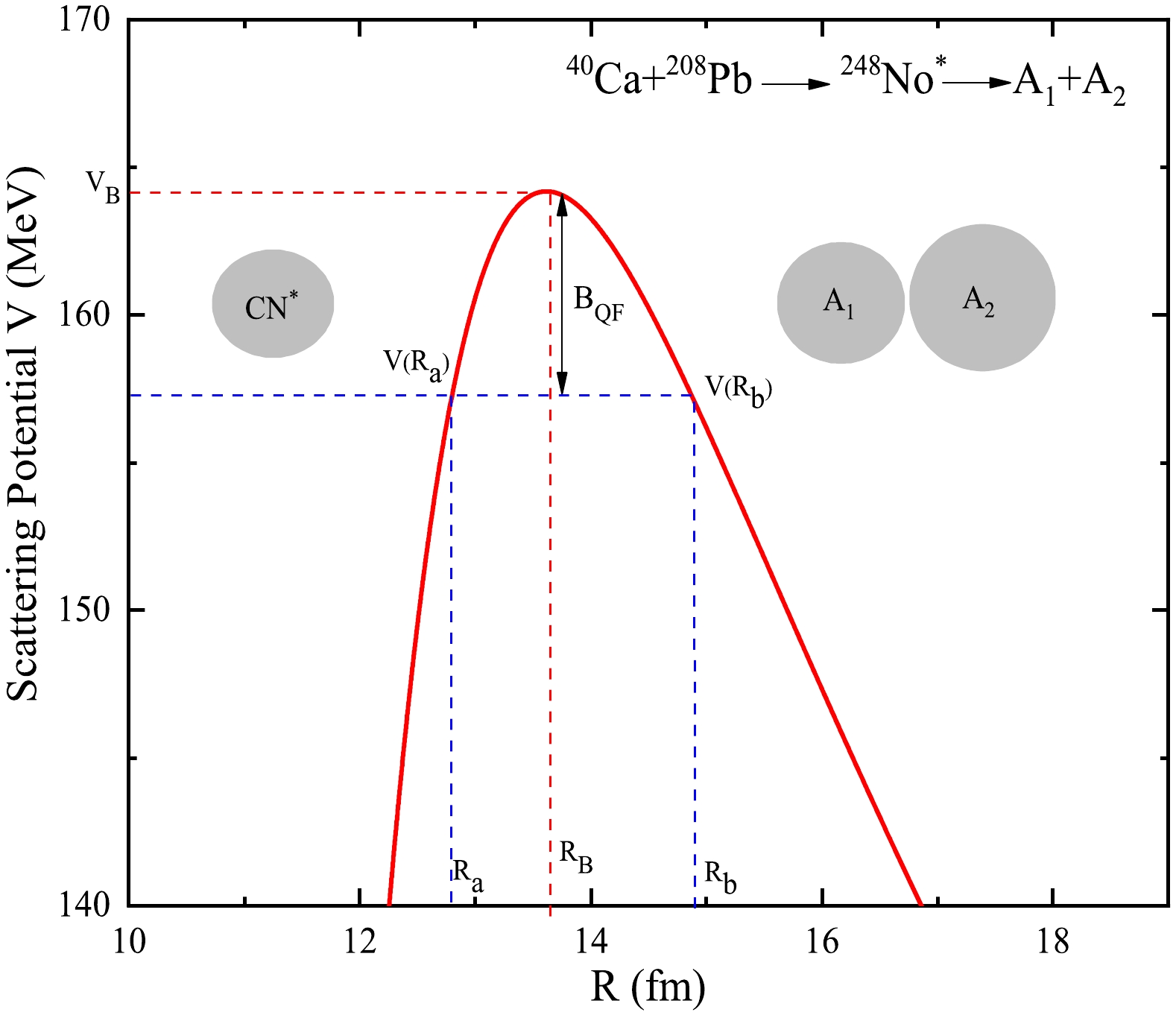
Figure 1. (color online) Calculated scattering potential, V (MeV), as a function of range, R (fm), for the entrance channel of 248No* nuclei at
ℓ=0ℏ atEc.m = 187.03 MeV.To evaluate the impact of different mechanisms on the synthesis of superheavy nuclei, we computed the
PCN for both 248No* and 250No* nuclei. If the value of PCN ~ 1, then the reaction is classified as a CN reaction. The deviation of PCN from unity indicates the potential to investigate the significance of the nCN process. The calculated PCN for the two isotopes of 248No* and 250No* having Z = 102 nuclei with three different entrance channels, i.e., 40Ca+208Pb, 44Ca+206Pb, and 64Ni+186W are 3.40 × 10−5, 1.94 × 10−5, and 1.06 × 10−5 respectively. When the value of PCN is less than 1 in the calculated data, the occurrence of nCN processes is suggested. Hence, the contributions ofσff ,σQF , andσFF , are obtained such that dynamics of superheavy systems can be understood. -
Experimental data were employed to assess the ff, QF, and FF cross-sections for the 248No* and 250No* nuclei. These calculations were performed via the DCM framework. Additionally, the capture cross-section (
σcapture ) was studied by utilizing theℓ -summed Wong model. The calculations were carried out by considering the hot optimum orientations at the energies around the barrier of the decay fragments. Initially, we discuss the 248No* nucleus. Figure 2 shows the fragmentation potential, V (MeV), for the decay of 248No* nuclei at threeEc.m. = 187.03, 209.67, and 239.03 MeV for theℓmax values of angular momentum obtained from the most probable fragment for which the penetrability becomes equal to one (i.e., P = 1). The T-dependent collective potential energy calculation provides information about the relative contributions of potential decay fragments. (i) From the figure, it is evident that with increase in temperature, the magnitude of the fragmentation potential increases, whereas the structure remains similar as we move from lower energies to the higher excitation energies. (ii) The most probable decaying fragments are clearly indicated in the figure, and it can be seen that the decay fragments remain the same independent of the expectation energy. (iii) The angular momentum for the highestEc.m. is greater than for the otherEc.m. values, which could be attributed to the fact that a higherEc.m. requires more angular momentum to decay. (iv) The configuration of fragmentation potential for light mass fragments (LPs) and intermediate mass fragments (IMFs) and the fission region remains similar at extreme energies.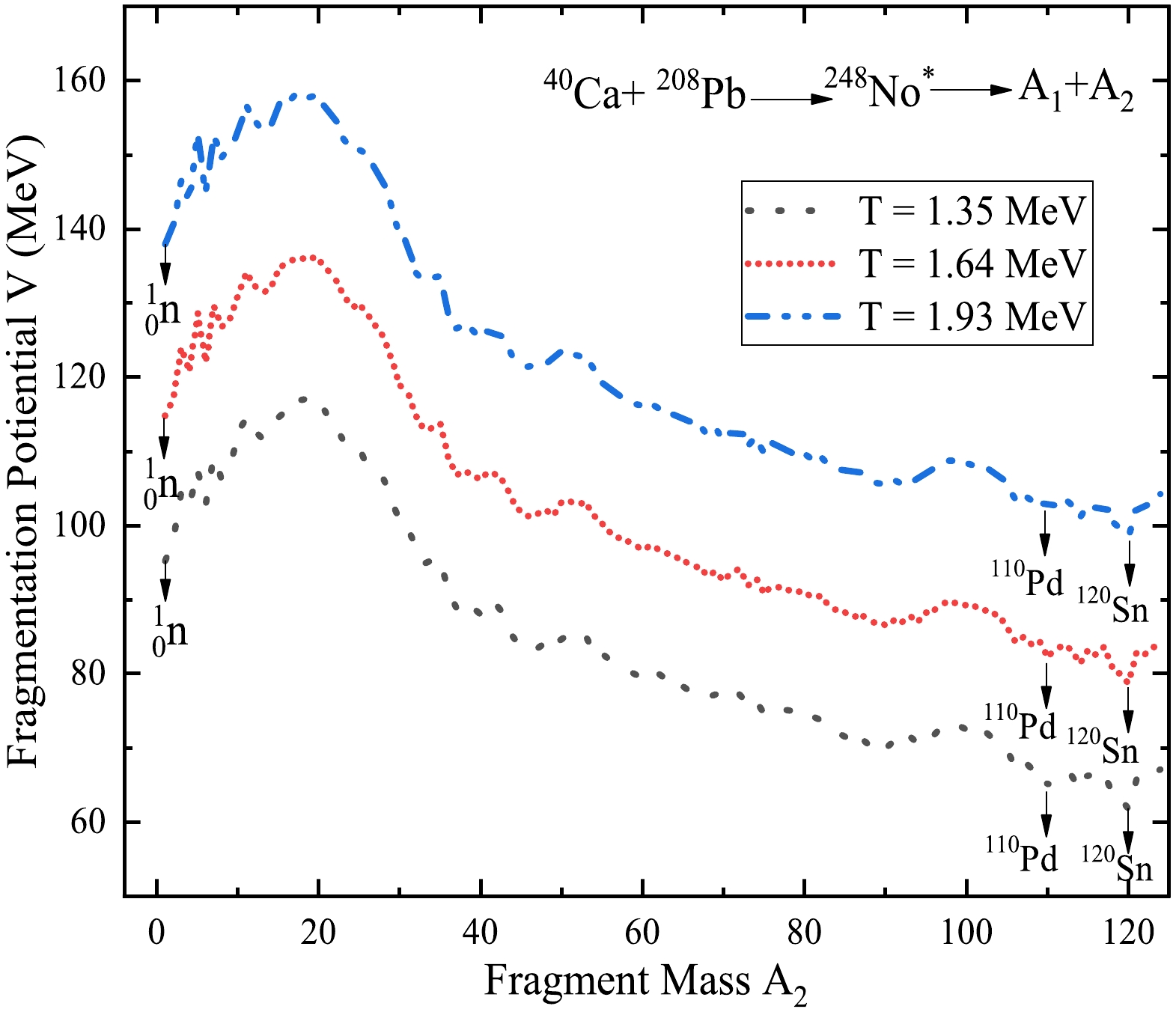
Figure 2. (color online) Fragmentation potential, V
(A2) , for the 248No* nuclear system formed via the 40Ca + 208Pb reaction system atEc.m. = 187.03, 209.67, and 239.03 MeV, using the fixed value ofΔR for the maximumℓmax values of the angular momentum.Figure 3 delves deeper into the examination of decay by plotting the preformation probability
(P0) based on the fragment mass,Ai (i = 1,2). The analysis illustrates that the fission contribution becomes more pronounced as theℓ values increase. When examining the preformation profile at differentEc.m. , it is clear that the value ofP0 varies, whereas the distribution of mass for the fission fragments remains nearly equal and is asymmetric, regardless of theEc.m. . Crucially, these secondary peaks can be linked to the potential for the QF process. Further, the most probable fragments and their complimentary fragments observed on the asymmetric peaks remain similar as we move from the lowest to the highestEc.m. . Furthermore, we emphasize that the fragment with maximum probability to be preformed is 120Sn and its complementary fragment, 128Te. Both emitted fragments are near the magic numbers Z = 50 and N = 82, and hence, the shell effects are key to the asymmetric fission distribution.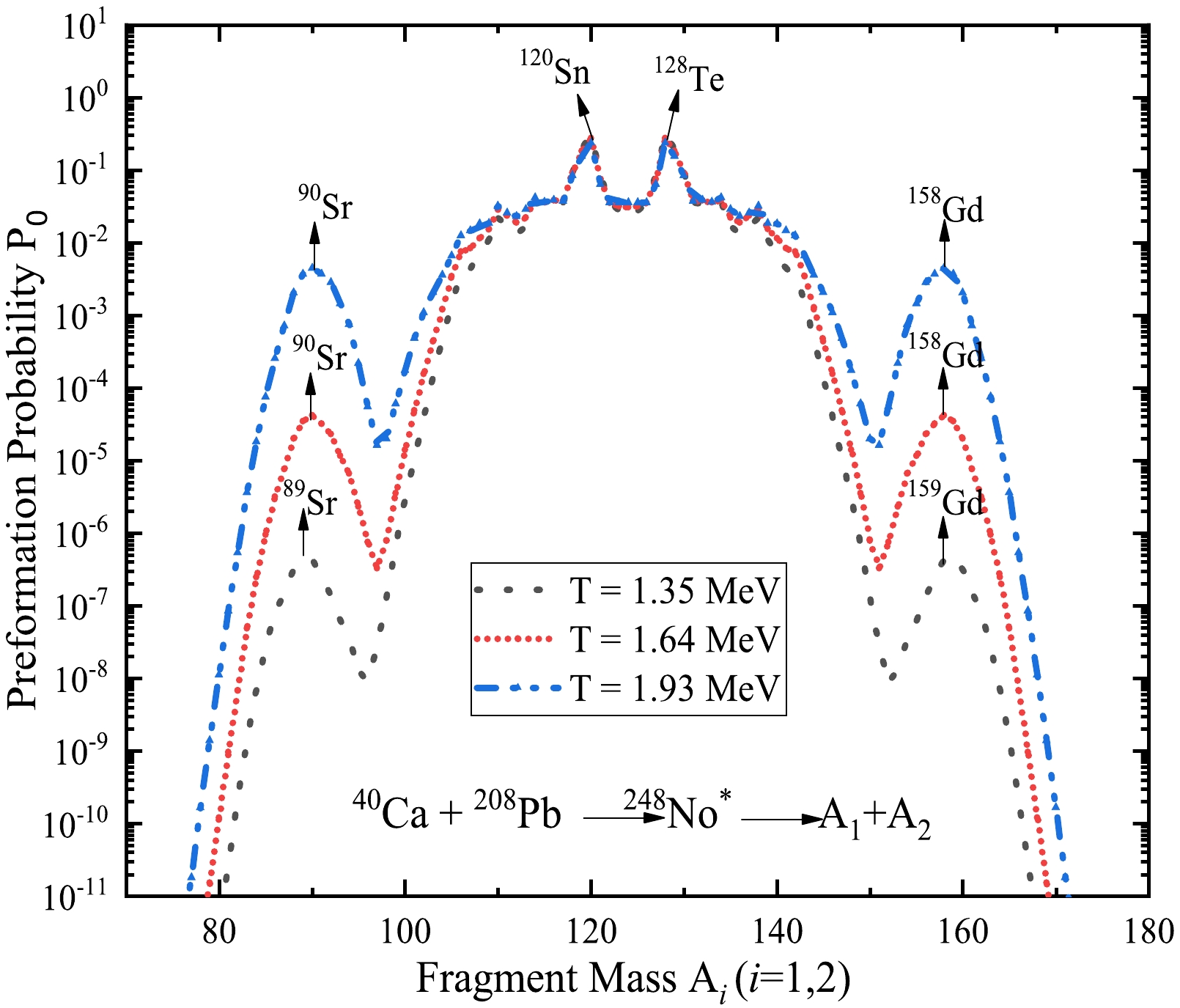
Figure 3. (color online) Fragment preformation probability,
P0 , versus the fragment massAi (i = 1,2) for the decay of 248No* nuclei including theβ2 -deformation effects, plotted with a fixed neck-length parameter and the highest value of the angular momentum.Based on our understanding of the potential for fragmentation and the preformation analysis, we aimed to analyze the conflicting CN and nCN decay processes in the 248No* nucleus. A recent investigation involved examing the decay mechanism of Z = 102 nuclei using 40Ca + 208Pb reaction with DCM.
σcapture incorporates the contributions from CN and nCN processes, i.e.,σcapture=σCN+σnCN . The current study focuses on theσcapture for the 248No* nucleus corresponding theEc.m. calculated using theℓ -summed Wong Model, and theℓmax values are determined via the sharp cutoff model [74]. Table 1 clearly shows thatσcapture increase with the increase inEc.m. . The conclusions derived within the theoretical approach are consistent with the experimental data. Additionally, the formation of a compound system involves two components: the ER and ff cross-sections. Mathematically, this can be expressed asσCN=σER+σff . Alternatively, we can address the hindrance in the CN formation by considering the nCN cross-sections(σnCN) , which consider the contributions of both QF and FF processes. In other words, we can expressσnCN as the sum ofσQF andσFF . Thus, we examined CN-fission. The fragments chosen for 248No* nuclei were within the limits of A/2 ± 20 for correspondence with existing data.Ec.m. 

/MeVE∗CN 

/MeVT
/MeVℓmax 

/ℏ 

ΔR 

/fmσDCM2n 

/nbσDCMff 

/mbσExpt.ff 

/mbΔRQF 

/fmσDCMQF 

/mbσExpt.QF 

/mbΔRFF 

/fmσDCMFF 

/mbσExpt.FF 

/mbσDCMcapt. 

/mbσExpt.capt. 

/mb187.03 49 1.35 123 2.14 0.00771 160.11 159 2.27 53.49 53 − − − 212.0 212 209.67 73 1.64 134 2.21 11.3 306.25 305 2.29 62.90 62 1.58 253.35 253 627.35 620 238.19 101 1.93 147 2.22 442 280.23 280 2.30 79.10 79 1.77 575.44 572 939.96 931 Table 1. DCM-measured evaporation residue,
σ2n , fusion-fission,σff , quasi-fissionσQF , and fast fission,σFF cross-sections; as well as capture cross-sections,σcapt. ; as calculated using theℓ −summed Wong Model for 248No* nucleus at differentEc.m. , along with the relevantΔR , T, andℓmax values, compared with experimental data [36].In the QF phenomenon, the projectile is captured by the target nucleus and a non-equilibrated compound system is formed. This system remains confined within the potential well for a brief period. The QF contributions are calculated by considering the most probable fragments that appear on the shoulders of the preformation probability,
P0 , from Fig. 3, and their complementary fragments, and further considering the preformation probability of each fragment on the peak and distributing the probability among all the considered fragments. The FF process results in the formation of a mononucleus that has successfully withstood the QF process. Of note, the angular momentum of the mononucleus is significant. At high angular momentum, the rotating system's fission barrier becomes insignificant because of the enhanced rotational energy. Therefore, a highly energetic and rapidly rotating nucleus experiences rapid fission, resulting in the production of two fission fragments, which resemble those produced in the FF process. For fission fragments (A2 = 90–124 and the complementary fragments), the Schrodinger equation must be solved to obtain theP0 for FF. Theℓ values range fromℓBf toℓmax , whereℓBf denotes the angular momentum at which the fission barrier ceases to exist. In this case, the possibility of barrier penetration is deemed to be maximal, i.e., P = 1. Clearly, Table 1 shows that the contribution of the CN process from ff first increases and then decreases as we move from lowest to highestEc.m. , whereas in nCN processes, i.e., QF and FF, the contribution is large at higher energies. Further, Table 1 provides the estimated cross-sections for the DCM, together with the associated values ofΔR , T, andℓmax values,E∗CN andEc.m. , andσcapture obtained by employing theℓ -summed Wong model for the decay of the 248No* nucleus. The DCM-derived cross-sections of the ff, QF, and FF processes and capture cross-sections show excellent concordance with the experimentally obtained data at all energy levels. Moreover, we obtained the 2n channel evaporation cross-sections for 248No* nuclei. The aforementioned observed cross-sections were determined by the optimization ofΔR . Accounting for the contribution ofΔR in the decay process is crucial because it leads to shape elongation in the compound system, resulting in the development of a neck between the nascent fragments. The presence of a neck region in the dinuclear system allows for the free movement of nucleons between the nuclei. This creates an opportunity for significant exit channels by altering the interaction barrier [75, 76]. The flow of mass drift and the adjustment of the barrier are governed by the neck length,ΔR . According to Fig. 4, there is a clear correlation between the increase inΔR and an increasedEc.m. . Further, as a result of its lower-barrier characteristics, the extended GSkI force necessitates a greaterΔR value, but it remains within the maximum allowable value. The value ofΔR gives an idea about the temporal scale of the fragments' reaction time; that is, the reaction time will be faster when the value ofΔR is higher. Because the QF process takes place faster than the ff and FF,ΔR is slightly higher for QF than the ff and FF.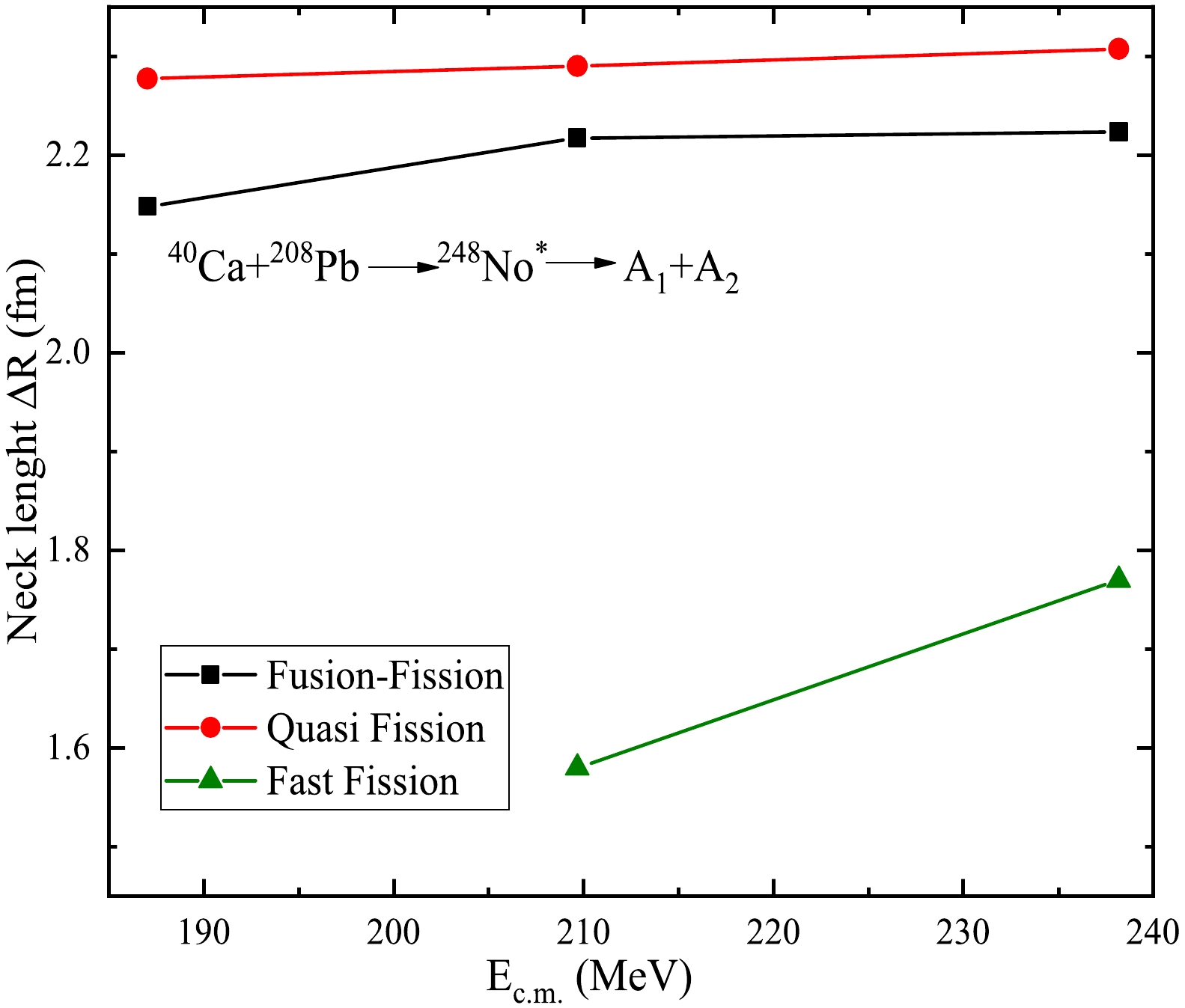
Figure 4. (color online) Neck length parameter,
ΔR (fm), with respect toEc.m. (MeV) optimized for ff, QF, and FF using the GSkI Skyrme force.Further, the impact of different entrance channel mass asymmetries on the synthesis of 250No* nucleus was assessed. This was achieved by considering two different incoming channels: 44Ca + 206Pb and 64Ni + 186W, at different
Ec.m. = 187.04 and 231.38 MeV. A comparison of the fragmentation potential, V (in MeV), is presented versus fragment mass in Fig. 5. The fragmentation potential shows a roughly identical variation for both entrance channels, with a slightly greater magnitude seen for the 44Ca + 206Pb case compared to 64Ni + 186W. The deformation effect shows the asymmetric nature of the fragmentation potential for both considered entrance channels in the analysis. According to the calculations based on the DCM, the fragmentation characteristics of ER, IMF, heavy HMF, and fission fragments are nearly identical. This means that the choice of entrance channel does not have any significant impact on the fragmentation behavior. Furthermore, the minima in the fragmentation potential for both entrance channels show a similar pattern. The results are elucidated in relation to the relative preformation probability,P0 . Figure 6 illustrates the computed preformation probability for the decay of 250No* at differentℓmax values and their correspondingEc.m. values. As shown, the preformation probability shows a slight variation in magnitude for the different entrance channels, whereas the structure remains almost similar and even overlaps each other in the fission region irrespective of the choice of entrance channels. Additionally, both cases have almost symmetrical fission peaks, and the contributing fission fragments remain the same. Furthermore, the fragments with maximum probability to be preformed, i.e., 122Sn and its complementary fragment 128Te are close to Z = 50 and N = 82 magic shell closure. Table 2 provides information related to the various decay modes and their corresponding cross-sections,ℓmax values, neck length parameter for for both incoming channels obtained using the GSkI force parameters. Table 2 clearly demonstrates that theℓmax values and theΔR are comparable for both incoming channels. This suggests that the decay of 250No* is not influenced by entrance channel effects. In addition, the calculations reveal that the contribution of the CN ff process is greater in the case of the 44Ca + 206Pb reaction, whereas the nCN QF process appears to compete with ff in the 64Ni + 186W reaction channel. Ultimately, the investigation of the decay of 250No* resulting from the collision of 44Ca and 64Ni beams with 206Pb and 186W targets, respectively, was carried out using the DCM framework, considering the impact of deformation. From the findings, it can be concluded that the decay process is independent of formation approach or range of excitation energies.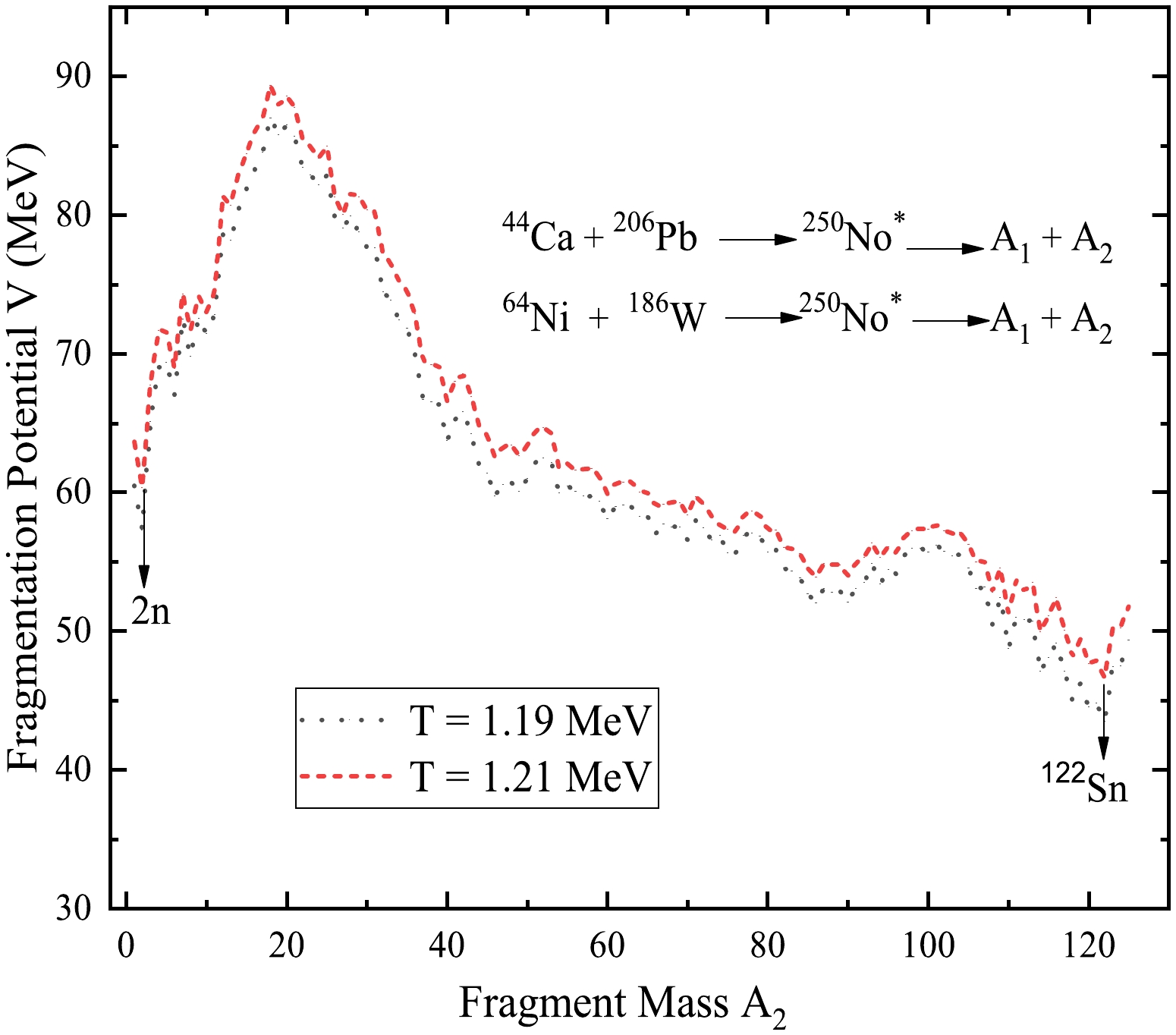
Figure 5. (color online) Variation of Fragmentation potential, V
(A2) , for the parent nucleus 250No* formed in the 44Ca + 206Pb and 64Ni + 186W reaction channels atℓmax values and best-fitted values of the neck length parameter,ΔR .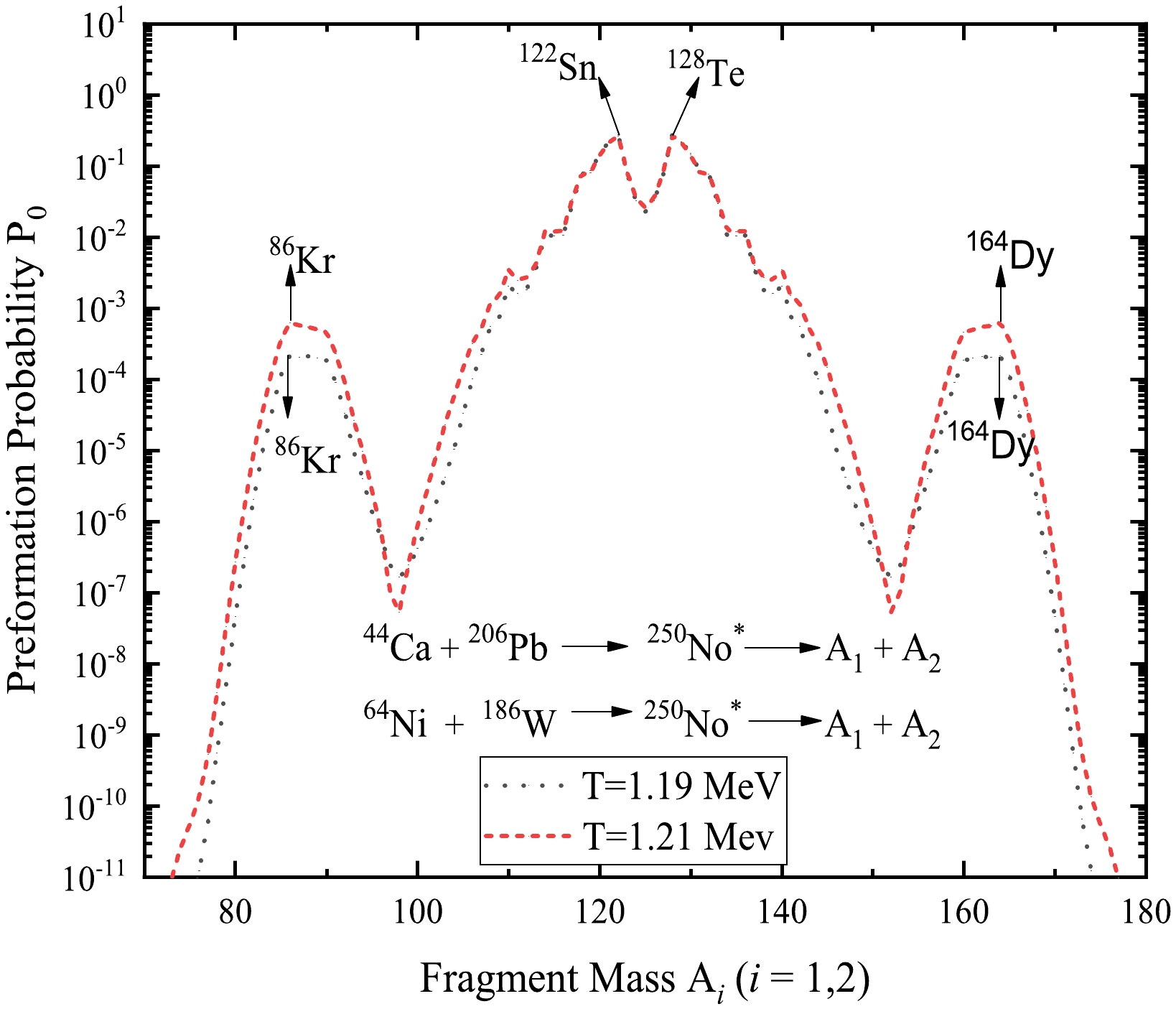
Figure 6. (color online) Same as Fig. 5 but the preformation probability,
P0 , varies with fragment mass,Ai (i = 1,2).Reaction Ec.m. /MeV

E∗CN /MeV

T/MeV ℓmax 

/ℏ 

ΔRff /fm

σff /mb

ΔRQF /fm

σQF /mb

σcapt. /mb

44Ca + 206Pb 187.04 38.69 1.19 85 2.19 109.34 2.33 27.23 140 64Ni + 186W 231.38 40 1.21 86 2.10 22.54 2.41 66.99 89.7 Table 2. DCM-calculated fusion fission,
σff , quasi-fission,σQF , and fast-fission,σFF , cross-sections; as well as capture cross-sectionsσcapt. calculated using theℓ -summed Wong Model in the decay of 250No* nucleus formed in 44Ca + 206Pb and 64Ni + 186W reaction channels at different center-of-mass energies,Ec.m. , with the best fitted neck lengthΔR , T, andℓmax values. -
This subsection focuses on the lifetimes of the ff and QF processes. Fission is a dynamic phenomenon where the nucleus undergoes deformation until it reaches a point of scission. Regarding significance, the timescale of the induced fission process is crucial, both theoretically and experimentally, because it is key to comprehend the nuclear reaction process. The overall duration of a fission process can be conceptually separated into two primary components: the time required for the nucleus to cross the saddle point, and the time it takes for the nucleus to deform from the saddle point to the scission point. The QF barrier depends upon the
Z1Z2 product, which in turn influences its lifetime. Hence, the available time may not be sufficient for conversion into a CN, resulting in the occurrence of the QF process. As a result, the duration of a partially equilibrated nuclear complex should be shorter than that of a fully equilibrated compound nuclear channel. Thus, the fission rate and fission lifetime for the asymmetric reaction, such as 40Ca + 208Pb, 44Ca + 206Pb and symmetric 64Ni + 186W reactions, which leads to the formation of 248No* and 250No* having Z = 102 nuclei, were calculated. Table 3, shows the comparison of ff and QF lifetimeτff /τQF using theE∗CN within the DCM and DNS approaches [73, 74]. The DCM and DNS approaches use different parameters to calculate the lifetime, thus leading to the observed difference in magnitude. In the DCM, the lifetime depends on three major factors, i.e., the preformation probability,P0 , penetrability, P, and barrier assault frequency,ν0 , whereas in DNS approach is greatly influenced by the charge number of the projectile and target nuclei, beam energy, etc. As shown in Table 3 , the calculations carried out for the DNS cases are consistent with the trend that lifetime decreases with the increase in the excitation energyE∗CN , whereas in DCM analysis, the lifetime remains almost constant. There is a noticeable trend that ff and QF lifetimeτff /τQF decreases with increase in theE∗CN . Therefore, the stability of a massive CN decreases as its excitation energy increases, primarily because the fission barrier is reduced. On comparing the lifetimes obtained using the DCM and DNS approaches, there is a small magnitude difference for the ff channel, whereas the QF lifetimes are almost the same for both approaches. Thus, the chance for survival of the large CN decreases as the fission barrier falls with the increase in theE∗CN of the resulting compound system.Reaction Ec.m. /MeV

E∗CN /MeV

T/MeV τff (DCM)/s−1

τff (DNS)/s−1

τQF (DCM)/s−1

τQF (DNS)/s−1

40Ca + 208Pb 187.03 49 1.35 1.64 × 10−16 4.98 × 10−19 3.42 × 10−21 5.41 × 10−21 209.67 73 1.64 6.91 × 10−16 2.39 × 10−19 3.68 × 10−21 3.12 × 10−21 238.19 101 1.93 1.52 × 10−15 1.45 × 10−19 3.93 × 10−21 2.14 × 10−21 44Ca + 206Pb 187.04 38.69 1.19 5.49 × 10−17 1.50 × 10−18 3.01 × 10−21 1.46 × 10−20 64Ni + 186W 231.38 40 1.21 4.85 × 10−17 1.18 × 10−18 1.18 × 10−21 1.41 × 10−21 Table 3. Comparison of fusion–fission lifetime,
τff , and quasi-fission lifetime,τQF , for different formation reactions of 248No* and 250No* at different excitation energies using the DCM and DNS approach. -
Using the DCM, the competing decay mechanisms (ff, QF, and FF) leading to 248,250No* isotopes having Z = 102 nucleus reactions were investigated using CN and nCN processes. The investigation was conducted at incident energies around the barrier, considering the quadrupole deformation using the optimum orientation approach. The calculated ff, QF, FF, and capture cross-sections showed satisfactory agreement with the experimental data. The existence of the nCN channel is regulated by the capture process. Further, the CN formation probability
(PCN<1) clarifies that nCN processes, such as QF and FF, compete with the CN ff process. A comparative analysis was conducted to assess the fragmentation and preformation profiles of the isotopes 248No* and 250No*. The contribution of QF and FF start competing with the ff process at energies around the barrier because of the reduction in the fission barrier. The most probable fragments in mass distribution have been identified near the magic shell closure at Z = 50 and N = 82 leading to asymmetric fragmentation. Finally, the ff and QF lifetimes were estimated and compared with the DNS approach.
Investigation of decay mechanisms and associated aspects of exotic nobelium isotopes using the Skyrme energy density formalism
- Received Date: 2024-01-30
- Available Online: 2025-03-15
Abstract: The search for heavy elements has yielded many surprises and enhanced our knowledge of nuclear synthesis and associated dynamical aspects. Although new elements and their associated isotopes have been synthesized, information concerning elements with





 Abstract
Abstract HTML
HTML Reference
Reference Related
Related PDF
PDF




















 DownLoad:
DownLoad: